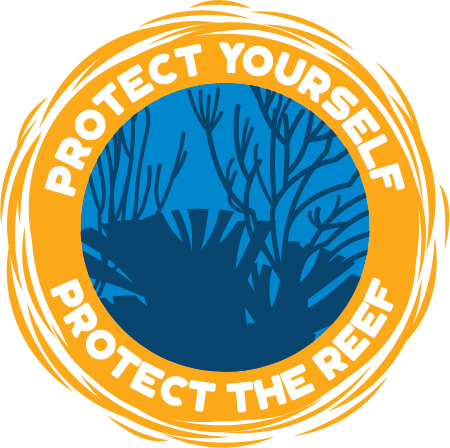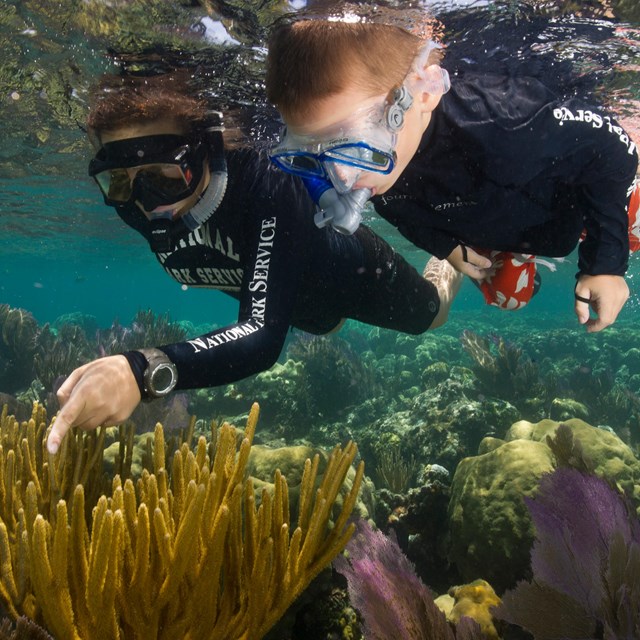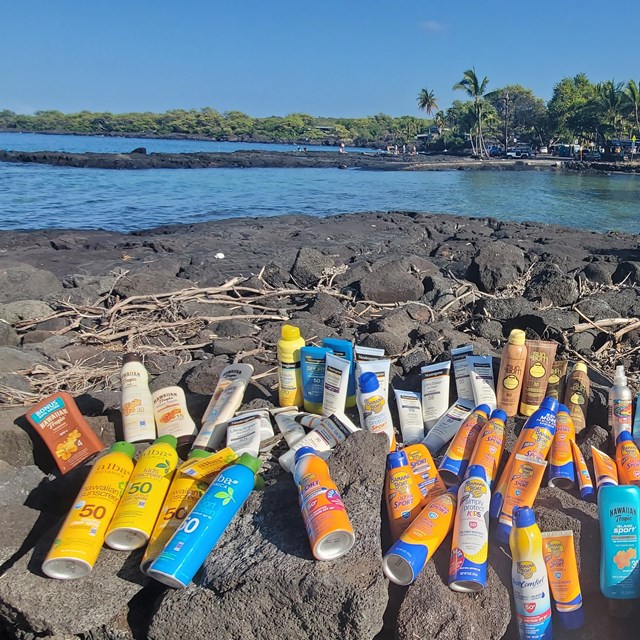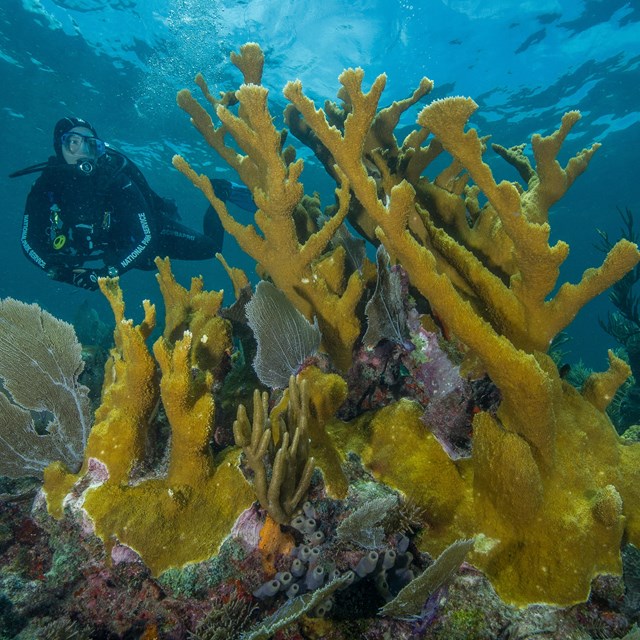More than 1 million people jump in the ocean to explore coral reefs in national parks every year, and the sunscreen they apply washes off into the water and over the coral. It’s estimated that 4,000 to 6,000 tons of sunscreen wash off people and into our oceans worldwide every year!
Sunscreen pollution can have major impacts on corals, fish, mammals—the whole ecosystem. Not only can it bleach or deform corals, but it can also impair the growth of green algae, an essential part of the food web. The effects can be seen all the way up the food chain, even affecting at-risk species like the Hawaiian green sea turtle or honu. Unfortunately, through water sampling around coral reef sites, the National Park Service has detected high concentrations of some of these harmful chemicals such as oxybenzone, octinoxate, and avobenzone. You can protect yourself and the reef by making a few simple choices.


Left image
A healthy coral colony (brown lobe coral, Porites evermanni).
Credit: Keoki Stender
Right image
A bleached, dead, coral colony (brown lobe coral, Porites evermanni).
Credit: Keoki Stender
Reef-Friendly Sun Protection Tips

Quick tip: Look for sunscreens with only zinc oxide or titanium dioxide!
Sunscreen comes in two main types: physical sunscreens and chemical sunscreens. Reef-friendly sunscreens are physical sunscreens that contain minerals that physically block harmful rays from the sun. The ingredients zinc oxide and titanium dioxide are found in mineral-based sunscreens. Chemical sunscreens use synthetic compounds that absorb UV rays from the sun before they reach the skin. Ingredients to avoid when shopping for sunscreen products are the synthetic chemicals oxybenzone, octinoxate, and avobenzone. Sunscreens with the label “reef-friendly” may still include ingredients that can harm corals. Always look at the label and select sunscreens with only zinc oxide or titanium dioxide.
You can also protect yourself from the sun by wearing UV-rated clothing like a swim shirt or rash guard. Protective clothing, umbrellas, and avoiding the sun when it’s highest in the sky between 12 pm and 2 pm can protect you from the sun’s intense rays and keep harmful chemicals out of the ocean.
By adopting an environmentally mindful sun protection routine, you protect yourself from the sun's harmful rays while helping the National Park Service protect the spectacular but fragile coral reef ecosystem below the ocean's surface. Colorful coral reefs are home to an enormous diversity of species. Healthy coral reefs found in our national parks attract visitors from around the world, and the National Park Service works hard to monitor the health and natural processes of coral reefs and educate people about the value of our reef ecosystems.
Join the National Park Service in protecting coral reefs by pledging to choose reef friendly sun protection, passing on what you know to friends and family, and learning how to live blue.
What You Can Do
-
 Take the Sun Protection Pledge!
Take the Sun Protection Pledge!Take the pledge to protect yourself, the reefs, and the ocean.
-
 Pass it on!
Pass it on!Pass it on! Share this I Didn't Know That! article and card to get the word out there about reef-friendly sun protection.
-
 Living Blue
Living BlueWhether or not you live on the coast, the state of the ocean affects us all. You can help protect it by living blue. Follow these tips.
Last updated: October 5, 2022
